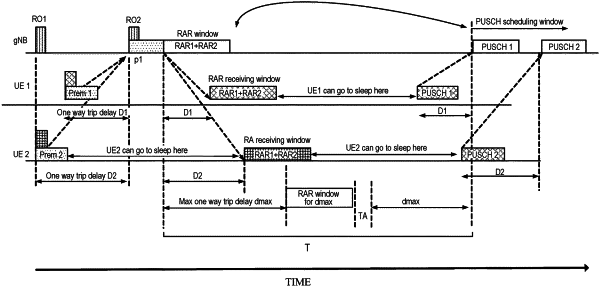| CPC H04W 74/0833 (2013.01) [H04W 56/0005 (2013.01); H04W 56/0045 (2013.01); H04W 72/23 (2023.01); H04W 74/006 (2013.01)] | 22 Claims |

|
1. A method of wireless communication by a user equipment (UE), comprising:
receiving information to estimate a propagation delay between the UE and a network node accessed via non-terrestrial communications;
transmitting, to the network node, a physical random access channel (PRACH) preamble a user specific timing advance period before a random access channel (RACH) occasion at the UE, the user specific timing advance period corresponding to the propagation delay between the UE and the network node; and
receiving a grant for an uplink shared channel, the uplink shared channel scheduled later than a start of a RAR window delayed by twice a maximum propagation delay in addition to a UE time offset, the maximum propagation delay corresponding to a cell specific longest propagation delay for a UE that is located farthest from the network node, the maximum propagation delay being a same delay for all UEs within a cell.
|